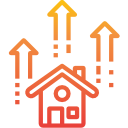Smart home automation is rapidly shaping the future of residential living, enabling households to become safer, more energy-efficient, and responsive to their inhabitants’ lifestyles. With advances in artificial intelligence, connectivity, and device integration, homeowners are now equipped with an expansive range of tools to optimize comfort and convenience. This page explores the latest breakthroughs in smart home technology, delving into how each innovation contributes to an enhanced living environment while offering a glimpse of what the future holds.
Previous slide
Next slide

Internet of Things (IoT) Integration
Interoperable smart devices signify a leap forward in home automation by ensuring that devices from different manufacturers can communicate and work together. Protocols such as Matter and Zigbee are at the forefront of this movement, eliminating isolated ecosystems and streamlining the user experience. Homeowners are no longer limited to a single brand; instead, they can assemble an optimal mix of devices that suit their unique needs, all managed through centralized control systems. This interoperability enables more robust automation scenarios and greater flexibility for upgrades.
Advanced Security Solutions
Biometric Access Control
Biometric access control systems introduce personalized and highly secure mechanisms for entering a residence. Using fingerprint, facial, or even voice recognition technology, these systems ensure that only authorized individuals gain access to the home. Unlike codes or traditional keys, biometric data is difficult to replicate or steal, reducing the risks of unauthorized entry. These technologies can also integrate with broader security ecosystems to trigger alerts or adjust alarms automatically based on user authentication, further enhancing household security.
Smart Surveillance Cameras
Smart surveillance cameras have evolved from passive monitors to active components of home defense. Modern models are equipped with AI-driven analytics, capable of recognizing specific faces, detecting unusual behavior, and even distinguishing between people, pets, or inanimate objects to minimize false alarms. Integration with mobile apps allows homeowners to receive instant notifications of unusual activity, communicate through two-way audio features, and securely store HD video in the cloud, ensuring that crucial data is never lost and always accessible.
Cybersecurity Enhancements
As homes become more connected, the importance of strong cybersecurity cannot be overstated. Today’s smart security solutions safeguard not just the physical perimeter but also defend against digital threats. Sophisticated firewalls, real-time intrusion detection systems, and automated updates are essential features, protecting devices and sensitive data from hackers or malware. Some platforms use AI to detect unusual network activity and take proactive measures, providing another layer of confidence for homeowners in a digitally integrated world.
Energy Management and Sustainability
Intelligent Lighting Systems
Intelligent lighting systems offer more than convenience—they are revolutionizing energy efficiency in homes. By using sensors to detect occupancy and natural light levels, these systems automatically adjust lighting to avoid unnecessary energy usage. They can be programmed for daily routines or respond dynamically to changes in real-time, such as dimming when a room empties or brightening as natural light fades. Integration with mobile and voice controls further enhances flexibility, ensuring lighting is always optimized for comfort and sustainability while delivering noticeable reductions in utility expenses.
Smart Thermostats and Climate Control
Smart thermostats represent a significant leap in energy-efficient living. By learning household patterns, these devices automatically adjust heating and cooling schedules, maximizing comfort only when and where it’s needed. The latest models incorporate geofencing, remote access, and integration with other smart home systems to fine-tune performance based on weather forecasts or room occupancy. Over time, this leads not only to lower energy costs but also to a reduction in the home’s overall carbon footprint, making smart climate control a cornerstone of green home automation.
Solar Integration and Battery Storage
Residential solar power systems are being made smarter through home automation technologies. Integration of solar panels with intelligent inverters and battery storage gives homeowners the ability to monitor, control, and optimize their energy production and use. Automated management of storage systems allows for efficient use during peak demand or outages, providing both economic and reliability benefits. Scheduling appliances to run on solar electricity during optimal periods further enhances sustainability, and advanced analytics give users a granular understanding of their consumption patterns and potential improvements.
Connected Kitchen Innovations
Technological advancements are revolutionizing the modern kitchen through appliances that sync seamlessly with smart home hubs. Smart refrigerators track expiration dates, manage grocery lists, and suggest recipes based on available ingredients, while ovens and cooktops can be preheated or monitored remotely via smartphone apps. These innovations not only streamline meal preparation but also promote healthier eating and reduce food waste. The connected kitchen becomes a personalized culinary assistant, adapting to dietary restrictions and family schedules, making everyday cooking more enjoyable and efficient.
Intelligent Washing Machines and Laundry
Laundry routines are being transformed by intelligent washing machines equipped with sensors, AI, and remote connectivity. These appliances automatically select optimal wash cycles based on fabric type and load size, while also monitoring detergent levels to ensure ideal cleaning. Integration with mobile devices allows users to start, pause, or schedule loads from anywhere, receive notifications when cycles are complete, and access maintenance diagnostics. The result is cleaner clothes, lower resource consumption, and significantly more convenience for busy households.
Personalized Home Entertainment
Smart home automation is elevating entertainment experiences by tailoring media delivery to individual tastes and routines. Smart TVs, wireless speakers, and streaming devices work in harmony, responding to voice commands or programmed scenes to create immersive audio-visual environments throughout the home. Recommendations are personalized based on viewing history, and automation can dim lights or adjust blinds for optimal viewing conditions. Seamless connectivity ensures that content can follow family members from room to room, providing consistent enjoyment with minimal user intervention.

Previous slide
Next slide
Automation for Accessibility and Aging in Place
01
Voice and gesture-based controls make smart home technology accessible to a wider range of users, including those with limited mobility or dexterity. These intuitive interfaces eliminate the need for physical interaction with switches or screens, instead enabling users to manage lighting, climate, security, and more with simple commands or movements. Continued advances in speech recognition and gesture sensing technology are reducing error rates and expanding language support, breaking down barriers and promoting autonomy for every resident.
02
Automated mobility aids, such as smart wheelchairs, door openers, and elevator systems, bring greater independence to individuals within their homes. These technologies use sensors, machine learning, and automation to navigate spaces, avoid obstacles, and respond to changing user needs. Integration with smart home platforms means that doors can open automatically, lights can turn on as someone enters a room, and pathways are illuminated for safety, all coordinated through personalized routines. This ensures a seamless daily experience and fosters confidence in navigating the living space.
03
Smart home automation now includes sophisticated emergency response and monitoring systems, which are particularly valuable for seniors or those with medical conditions. Sensors can detect falls, abnormal movements, or health emergencies, instantly alerting caregivers or emergency services. These systems can also automate door unlocking, initiate two-way communication, and even provide visual verification, ensuring quick and effective assistance. By offering this safety net, smart homes allow more people to age in place, retaining independence while providing peace of mind to loved ones.
